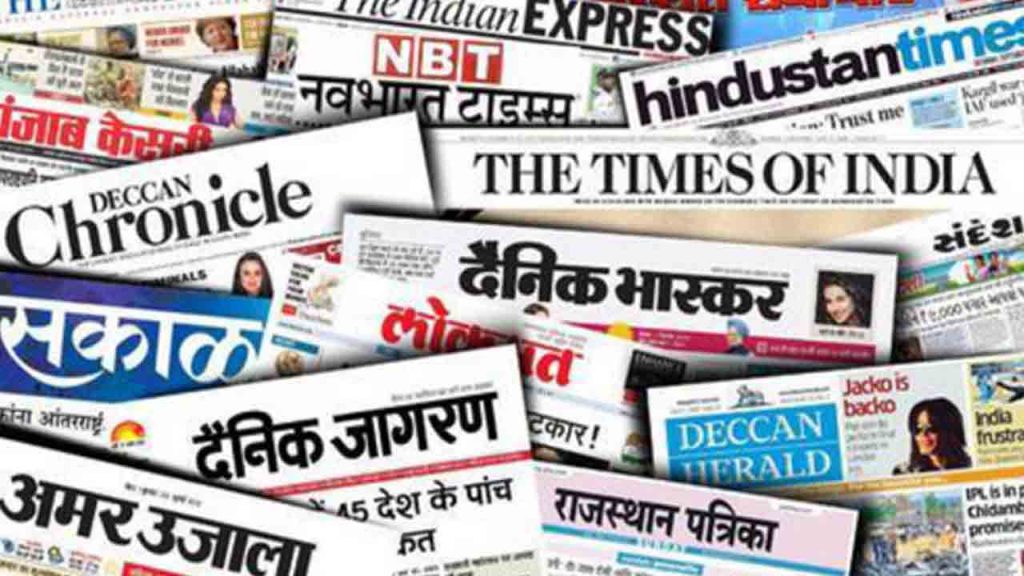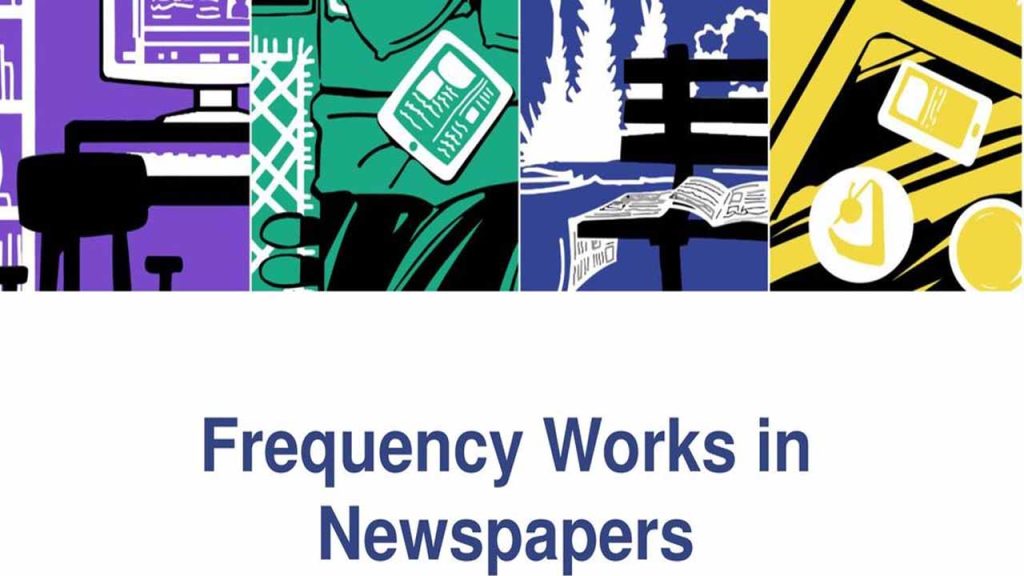How Much Does an Ad in a Newspaper Cost in India?

Newspapers are still an integral part of any Indian’s day in the world of booming media in India, where digital platforms are increasingly penetrating all aspects of our lives. Despite its popularity, print media remains essential for most businesses to communicate effectively with their target audience. However, newspaper advertising charges vary based on several criteria. This blog throws light on all those factors that decide the price of newspapers for advertisements in India, which will be helpful to businesses in their advertisement activity as part of their marketing mix.
Key Points in Introduction
- Importance of Newspaper Advertising:
Newspapers are one of the viable mediums connecting a business to its target audience. They are tangible in terms of presence, something online platforms cannot possibly provide. - Diverse Audience Reach:
Newspapers cater to different audiences, and therefore, they are an ideal advertising medium for targeting different audience groups. This diversity helps lever advertisement executions. - Cost-Related Factors:
The cost of placing advertisements in the newspapers depends on factors like circulation, ad size, placement, or the decision to target specific people. Knowing such subtleties can help an advertiser plan and budget for such advertisements. - Regional versus National Publications:
National dailies, like the Times of India, are way more expensive than regional newspapers. Such varied expenses make the advertisement available to cater to all-sized budgets for businesses; thus, the platform choice depends on the target market. - Seasonal and Promotional Rates:
The seasonals or a bulk purchase offer scope to save to some of the advertisers. Knowing these will make the use of advertising budgets quite effective.
Factors Influencing Newspaper Ad Costs

Several significant factors govern the prices of newspaper ads in India, whether significant business concerns or small enterprises.
1. Circulation and Readership

The More the Circulation, the Dearer it is
It is often the case that newspapers with more significant readership also charge more. For instance, national dailies like The Times of India have crores of followers. A full-page ad in such papers runs between ₹2 lakh to ₹10 lakh.
- Local Focus:
Regional newspapers: targeting specific groups of audiences charge lower prices. Regional advertisements may also be priced as low as ₹5,000 to ₹50,000 for small enterprises. - Effect on ROI:
Circulation is known and determines which paper will be published. More readership increases its visibility or exposure, thus determining its return on investment. - Group of Audience:
While more prominent media outlets tend to reach a larger audience, local newspapers give access to more niche markets, allowing marketers to target their messages more precisely toward targeted consumer segments. - Advertising Effectiveness:
Cost per circulation is proportional to effectiveness. The brand should determine if the size of the audience warrants the price in light of its marketing objectives.
2. Ad Size and Placement

Size Matters
Newspapers come in all sorts of ad sizes: full page, half page, quarter page, and classified. Of course, the bigger the ad, the more expensive it will be, and the better placements will cost more.
- Prime Locations:
Ads in prime locations, such as the front or back page of the newspaper, also carry a premium price simply due to the visibility. The advertiser needs to consider whether the premium is justified for the objectives. - Color vs. Black-and-White:
Colour ads are generally more costly than black-and-white ads. A decision between the two formats largely depends on the play between creative need and budgetary necessity. - Strategic Placement:
Where the ad is placed within the publication can also influence how it commands attention among the readership. High-impact placements add brand recall and recognition. - Budgeting for Size:
Knowing the cost implications of size can be very useful in allowing businesses to tailor their budgets to get the most exposure without overexposure.
3. Timing and Frequency

Seasonal Demand
Given the increased demand, advertisements during holidays or special events will naturally cost more. Advertisers must strategise in such a way as to spend less during campaigns.
- Discounts for Frequency:
Many newspapers provide frequency discounts where multiple ad placements are done within a certain period. Long-term commitments may save advertisers money. - Campaign Duration:
Advertisers should view the extended-term effects of maintaining constant visibility. A consistent impression of advertisement builds an impact on brand awareness. - Ad Timing:
Effectiveness also relies on the correct timing. In such a case, if the reader goes out in hordes, it can be maximised during peak reading times. It, therefore, puts a significant emphasis on planning. - Promotional Opportunities:
Self-monitoring promotional opportunities or special discounts can assist a company in reducing costs while maintaining the efficacy of the ads.
The Cost Range for Various Categories of Newspapers
Newspaper advertisement costs differ in India, as publications can be categorised broadly into different types.
1. National Dailies
High Range Pricing
The national dailies, for example, are charged a premium like The Times of India and Hindustan Times. A full-page colour ad would cost anything between ₹3 lakh and ₹10 lakh, which is a significant pay-off for reach.
- Ad Size Variation:
The half-page ads in the above media houses would vary between ₹1.5 lakh to ₹5 lakh. Quarter-page ads could go between ₹50,000 to ₹1.5 lakh. - Cost vs. Reach:
Brands have to offset steep costs against possible exposure and audience interaction. - Value of National Exposure:
For national exposure, brands require spending in quality publications that yield rich returns as high-profile readers’ outlets commonly attract a cross-section of readers. - Performance Indicators:
Ad performance indicators and rates of audience interaction in national dailies shall help plan future advertising activities and budget allocation in national dailies.
2. Local Newspapers
Least Expensive
Regional publications are available at relatively cheaper rates and are suitable for regional businesses. An advertisement falling between ₹20,000 to ₹1 lakh can easily feature on a full page.
- Targeted Reach:
Newspapers enable brands to reach target-specific audiences in geographic and demographic segments, where one finds better engagement. - Classified Ad Pricing:
Classified ads in regional dailies also cost between ₹1,000 to ₹10,000 and are mostly suited for lower-budget businesses. - Community Connection:
Regional papers empower local organisations to develop a robust corporate identity, which rewards better customer retention. - Cost-Effectiveness:
The cost structure of regional papers gives advertisers the scope to achieve cost-effectiveness, inequality and budget.
3. Special Supplements
Thematic Advertisement
Particular supplements are written on broad themes such as health or education, effectively targeting a specific target:
Advertisements in the themed sections become costlier but can mean higher relevance and responsiveness.
- Creative Opportunities:
Special supplements allow brands to tell themselves in different ways, so to speak, thereby carrying specific messages that resonate with particular audiences. - Value Proposition:
Returns on investments generated through thematic advertisements can help guide future advertising strategies and budget plans. - Positioning for Success:
Using special supplements will strengthen brand positioning and credibility. Hence, special supplements are an add-on that every advertising strategy needs.
Final Thoughts
Newspaper advertisements in India require a broad understanding of the various factors which come into play to determine this cost, of which circulation, size of the ad, place of publication, and the time of publication are also relevant.
Take Aways:
- Understanding the Costs:
Understanding how newspaper advertisements are impacted is highly necessary for an advertiser looking to maximise their expenditure. - Effective Targeting:
Understanding the demographics and selecting the relevant publication will significantly enhance the ad’s effectiveness and response. - Print and Digital Balancing:
Businesses face the challenge of balancing the benefits of print advertising with that of increasingly prominent digital media within the changing nature of media. - Strategic Campaigning:
Advertisers need to plan their campaigns strategically because ad frequency and seasonal trends may vary, as well as the nature of creative placement for impact. - Message is Important:
Whereas cost is an essential factor in an ad, its message and, more importantly, its reach to the target audience determines its effectiveness.
In the face of newspaper advertising, actual effectiveness lies not only in its cost but also in the message it conveys and the audience it reaches. How media and consumer preferences continue to evolve will determine the effectiveness of brands. Hence, it becomes essential to understand the nuances of newspaper advertising within India’s diverse and dynamic market.
